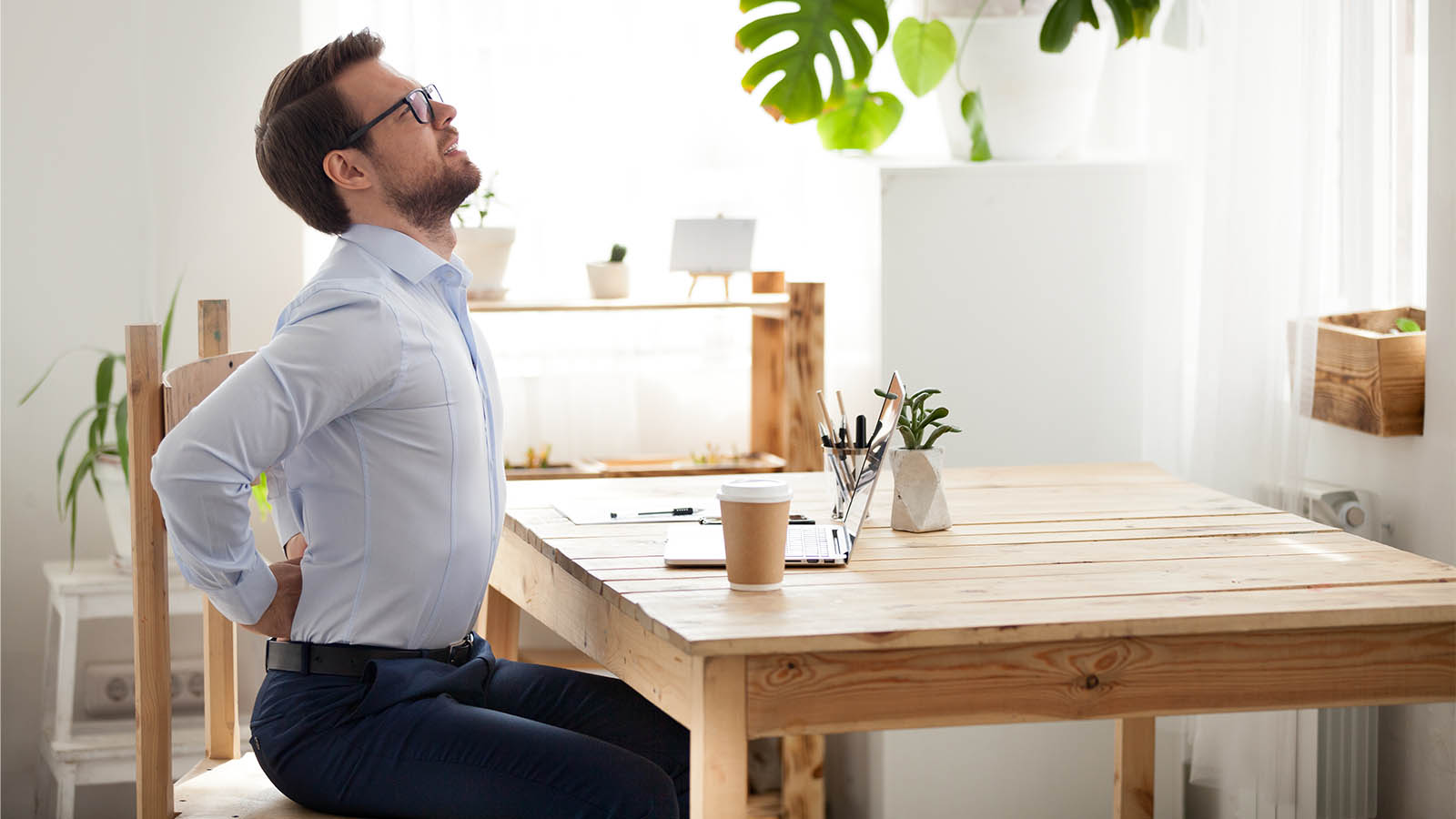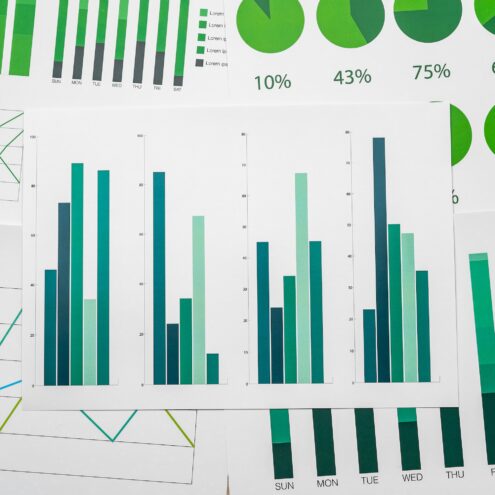Lumbar disc herniation

A herniated disc is an injury to a disc anywhere along the vertebral column, either in the cervical, thoracic or lumbar spine. The most common is a herniated disc in the lower lumbar spine, but it is also common in the cervical spine.
There are joints between the vertebrae to allow the spine to move in different directions. To facilitate mobility, there are disks, cushions of cartilage, between the vertebral bodies and the disks must also withstand compression, to act as shock absorbers.
A disk is made up of a soft, gel-like core, surrounded by a stronger, more fibrous collagen sheath. Discs are thus made up of a fascia structure and contain a large amount of water. With age, the water content of disks decreases and they become drier and more brittle, making it easier for the outer layer to crack. The inner soft core can then bulge to varying degrees, forming a hernia. When the herniation occurs between one of the lumbar vertebrae, we now have a herniated disc in the lumbar spine. Herniated discs are most common in the lower lumbar spine, between lumbar vertebrae four and five (L4/L5), or between lumbar vertebra five and the first vertebra of the sacrum (L5/S1).As the nucleus bulges, it may press on the nerve root that runs between the vertebral bodies where the hernia is located. The spinal cord, which carries information to and from the brain and various parts of the body, runs in a canal through the vertebrae. In a cavity between the vertebrae, a nerve root extends to each side (right and left). A nerve root is therefore a collection of nerve fibres that carry signals to and from the spinal cord and a body part.
As well as being caused by weakening and age degeneration, a hernia can be caused by repeated overloading or misloading or by an acute injury.
Symptoms of lumbar disc herniation
Often, the symptoms of a herniated disc come on gradually over several weeks, but they can also come on suddenly and acutely. Symptoms of a herniated disc in the lumbar spine are usually pain in the lumbar region, but it is possible to have a herniated disc without any symptoms at all. Depending on the size of the herniation and how much it presses on and irritates a nerve root, the symptoms will vary. Pressure on a nerve root in the lumbar spine can cause pain in the lumbar spine that radiates down the leg, which we call sciatica. The pain can be severe and you may find it difficult to walk, stand and sit down.
Nerve damage can cause numbness in the legs and feet, and sometimes certain movements can become difficult to perform and can cause loss of strength in the feet and toes. In rarer cases, severe nerve damage may occur with problems controlling urine and stools or reduced sensation around the genitals. In these cases, seek urgent medical attention without delay.
What can I do myself if I have a herniated disc in my lumbar spine?
You should definitely try to move around as much as you can without overexerting yourself. Sitting or lying still does not help the healing process but makes it worse. Walking is good, but not vigorous exercise that puts unnecessary strain on your back. Avoid sitting still, as this increases pressure on the lumbar spine.
Do relaxation exercises combined with deep breathing. Lie on your back with your legs bent 90° at the hips and knees (on a stool of a reasonable height). Arms out from the body at a 45° angle with palms up. Breathe deeply through your nose. Press your lower back into the floor. Lie like this for 10 minutes and feel how the lumbar spine is relieved.
Various exercises to strengthen stabilizing back and abdominal muscles are important to do daily. No heavy exertion but strength training for core muscles with balance exercises so that the small stabilizers of the back are strengthened. It is important to stretch the hip flexors as they are often short and cause problems.
Lying down to sleep can be tough when you have lower back pain. The same position as the relaxation exercise can be used when you sleep, preferably propped up with a box or, for example, a laundry basket. Or if it works better, use the fetal position, so that the lumbar spine is rounded.
To help your body heal, you can take supplements of hydrolyzed collagen, in larger doses, preferably 15 grams per day divided three times. Combine with some vitamin C.
Get help from a FasciaClinic. It can relieve the pain and help you with the most important thing; to get a more balanced body that loads vertebrae and disks more evenly distributed so that you reduce the risk of more herniated discs in the future.
Preventing herniated discs in the lumbar spine
The most important thing to prevent herniated discs is to try to keep the body in good balance so that the spine and other joints are evenly loaded. Exercise your back and abdominal muscles regularly and practice core and balance exercises.
Try to be as balanced as possible! Consult a FasciaClinic for help with body balancing.
Work ergonomically, use leg strength instead of back strength when lifting heavy and keep your back straight. Do not lift too heavily, and distribute the weight evenly when you have to carry heavy loads.
Do not jerk or twist your back under load.
Eat hydrolyzed collagen supplement for fascia maintenance. 5-10 grams per day spread over a couple of times a day.
When and where should I seek treatment for lumbar disc herniation?
If there is severe nerve damage with problems controlling urine and bowel movements or loss of sensation around the rectum and genitals or loss of sensation in the inner thighs, you should see a doctor urgently. However, this is not the most common case of a herniated disc.
Herniated discs are normally not dangerous but painful. Seek help as soon as possible at a Fascia Clinic to relieve pain and address spinal load imbalances. Treatment gets the fascia flowing and speeds up healing. It’s important to get help as soon as possible to facilitate healing.
Prolonged pressure on a nerve root can cause longer-term problems so don’t wait to seek help.
Exercises for lumbar disc herniation
Relaxation exercises lying on your back with your legs on a stool, angled 90° at the hip and knee. Arms out from the sides with palms up. Lie like this for at least 10 minutes and breathe deeply. Feel your lower back sinking towards the floor.
Extension exercises to stretch the hip flexors can help.
Assistive devices for lumbar disc herniation
Different types of back supports can be used to provide relief to the lumbar spine and to cope with a working day. A back brace or back corset is available in different variants and stabilizes and relieves the lumbar spine so that the pain may be reduced. It can also feel good with extra warmth in the lumbar region.
If you have to sit for long periods of time, a lumbar support can help improve your posture.
 Search
Search


































